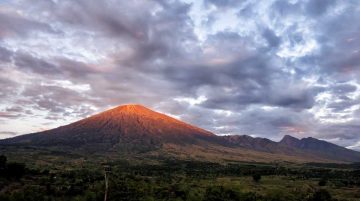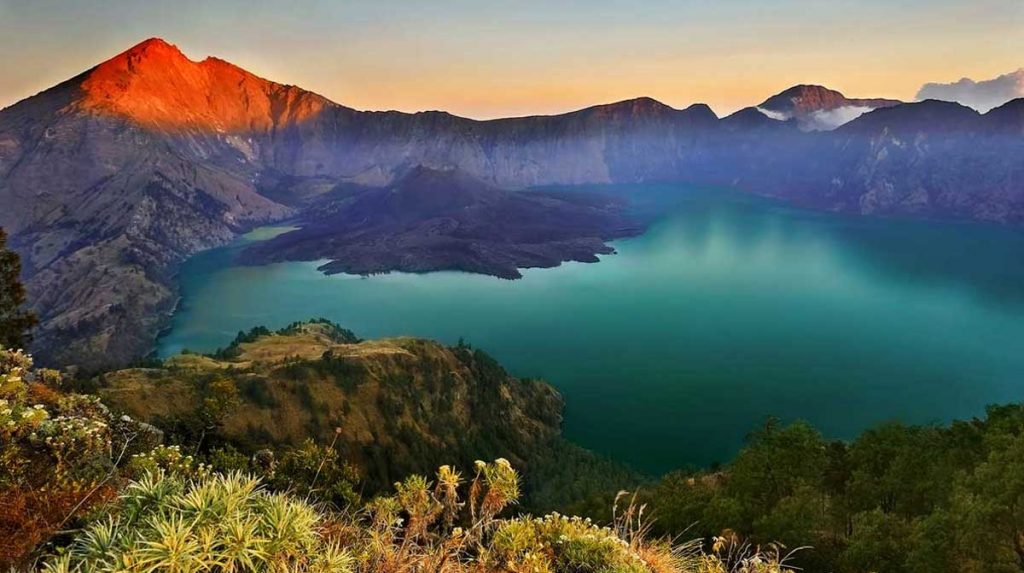At 3,726 m, Rinjani is the second highest volcano in Indonesia, second only to Mount Kerinci on Sumatra, and it dominates the landscape of the relatively small island of Lombok. Within its huge 50 km² caldera sits the crater lake...

Recommended Trekking Operator Rinjani Trekking Guide

At 3,726 m, Rinjani is the second highest volcano in Indonesia, second only to Mount Kerinci on Sumatra, and it dominates the landscape of the relatively small island of Lombok. Within its huge 50 km² caldera sits the crater lake...

Cultural Tips when visit RINJANI NATIONAL PARK LOMBOK ISLAND – INDONESIA DO * Smile and greet people, especially elders. * Shake hands, gently. * Accept hospitality and food. You do not have to eat and drink, but it is polite...

During early morning and evening walks in Senaru you are likely to see interesting birds, butterflies and at least one of the two species of monkey who live in the surrounding forest. Long-tailed macaques, known locally as kera, often sit...

Gunung Rinjani National Park lies within the major transition zone(Wallaceae) where the flora and fauna of South East Asia makes a dramatic transition into that which is typical of Australasia. The Park has a rich variety of plants and animals,...

The Rinjani Ecopark
The mighty Rinjani mountain of Gunung Rinjani is a massive volcano which towers over the island of Lombok. A climb to the top is one of the most exhilarating experiences you can have in Indonesia. At 3,726 meters tall, Gunung Rinjani is the second highest mountain in Indonesia. The climb to the top may not be easy but it’s worth it, and is widely regarded as one of the best views in the country.
Part of the famous ‘ring of fire’ this mountain also holds spiritual significance for the local people. It’s thought that the name Rinjani comes from an old Javanese term for ‘God’.
Around the slopes of Rinjani there are lush forests sprinkled with waterfalls and surrounded by stunning scenery.
Within the mountain is a crescent shaped lake, the breathtaking Segara Anak which is about 6km across at its widest point. This lake of sulfur is located 600 meters below the crater rim. Rising from the waters of this lake is a new volcano, Mt. Baru, which is a result of a series of eruptions during the 1990’s. Segara Anak is a spiritual place. The Balinese come here each year and perform a ceremony called pekelan where jewelry is placed in the lake as an offering to the mountain spirit. The Wetu Telu people also regard the lake as holy and come here to pray on full moon nights.
Mt Rinjani lies within the Gunung Rinjani National Park. The park covers 41,330 hectares and sits inside a major bio-geographical transition zone (Wallacea). This is where the tropical flora and fauna of South East Asia meets that of Australasia. This National Park was established in 1997 and is one of over 40 throughout Indonesia.
For visitors, the three-day Rinjani trek route from Senaru to the crater rim, down to the Crater Lake then on to Sembalun Lawang, is considered one of the best treks in South East Asia. More adventurous trekkers may want to head all the way to the summit of the volcano. This is best reached from Sembalun Lawang and takes four days, finishing up in Senaru.
To ensure that local communities benefit from tourism revenue, the Rinjani Trek is managed by a partnership of National Park officials, the public and private sectors of the Lombok tourism industry and community representatives. Community run cooperatives coordinate the Trek at the Rinjani Trek Center (RTC) in Senaru and the Rinjani Information Center (RIC) in Sembalun Lawang.
Revenue from tourism activities and entry fees is used for conservation, management and assisting the National Park with maintenance of the Rinjani Trek, thus ensuring its sustainability. This management model is unique in Indonesia and considered an example of best practice of ecotourism in Indonesia.